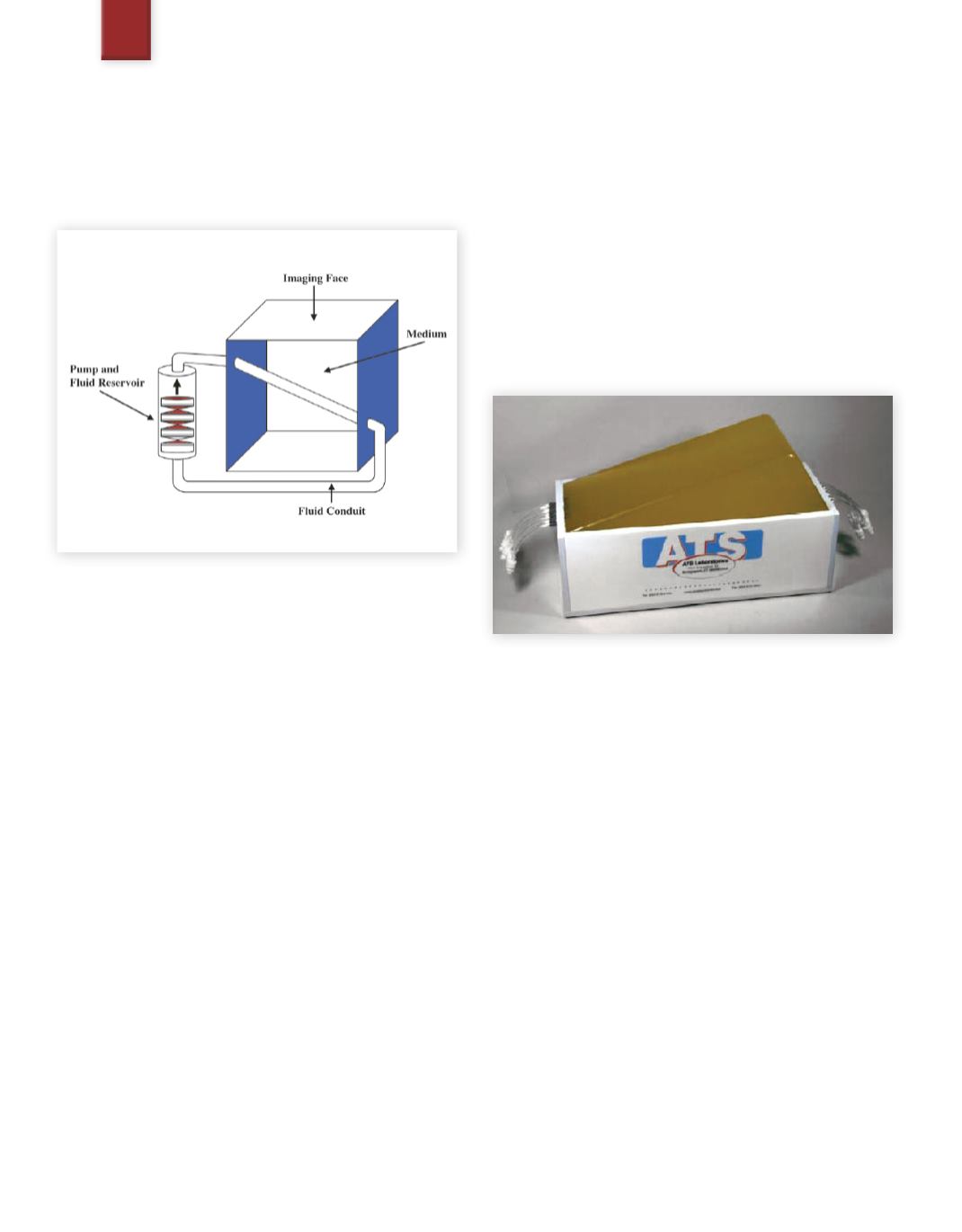
354
Level 2
Board Level
5.2 Flow Phantoms
Basic Design
In its simplest form, a flow phantom consists of a pump and fluid
reservoir, a fluid constraining tube or conduit, a fluid, and a sur-
rounding medium.
Fig. 1
Flow phantoms
Blood Mimicking Fluids
Depending on the pumpingmechanism,flow phantoms can provide
either continuous or pulsatile flow. In either case, there are some
real world difficulties to overcome to make Doppler flow phantoms
work well. The first problem is how to create a fluid which mimics
blood. Water cannot be used since ultrasound requires an acoustic
impedance mismatch to cause reflections. Since water is homog-
enous, it creates virtually no reflection.
For research, there are times where human or animal blood is used.
You can imagine the issues associated with using real blood. There
are obvious issues of contamination, cleanliness, consistency over
time (changes in blood viscosity),variations in blood lots (variation
in hematocrit), accessibility, etc. Given the difficulties of using real
blood, other fluids are much more commonly used. Since water
cannot be used, quite frequently a suspension is created to increase
the scattering properties. Problems still exist since over time the
particles tend to precipitate out of solution, making the scattering
property of the fluid variable over time. Additionally, air bubbles
tend to develop in the fluid causing specular reflections which tend
to saturate the Doppler circuitry and wall filters.
Other Potential Issues
Depending on the flow phantom design, other problems can exist
such as: unwieldy size, weight, collapsing flow tubes (conduits),
in-adherence of tubes to medium walls, and leaks. For all of these
reasons, it is very difficult to develop a flow phantom which is con-
sistent enough over time to develop a stable sensitivity reference.
Example of Flow Phantoms
The following pages contain examples of various types of flow phan-
toms and related products from multiple vendors. An attempt was
made to include a variety of phantoms frommultiple vendors so as
to demonstrate the range of testing approaches.
Note: Text in
the color blue
indicates wording excerpted from equip-
ment manufactures’ product descriptions.
Fig. 2
ATS Model 527 Doppler Flow Phantom
Model 527 ATS
Doppler Flow Directional Discrimination Device
• Directional Discrimination
• Flow Velocity
• Sensitivity at varying depths
• Maximum Penetration
• Location of Flow
Product Description
Model 527 rubber-based tissue mimicking phantom from ATS is
designed to test color Doppler flow imaging systems. This phantom
monitors the ability of the system to discriminate the direction of flow
in small vessels, of close proximity, at varying depths. The phantom
contains four pairs of 2 mm flow channels. The edge-to-edge spacing
between the flow channels within each pair progressively increases
from 1 mm to 4 mm. If greater distances are desired, a combination
of two flow channel pairs can be used. A fixed-angle scan surface
maintains a constant angle between the sound beamand the test fluid
flowing the phantom at 18° or 56° permitting continuous scanning at
depths ranging from 3 to 17 cm.
SAMPLE PAGE


